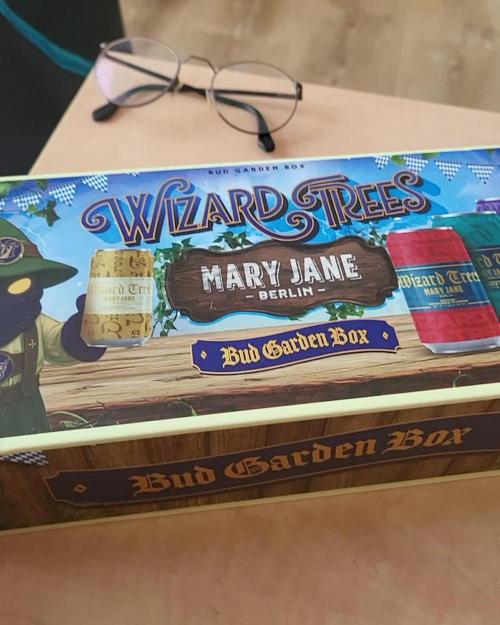The Grow Awards 2026 🏆 































Likes
Comments
Share


@fabialien
Follow
Semana del 9 al 15 de septiembre 2024.
Las Positronics auto aun no Entran a Floración, y ya van bastante avanzadas, mientras las otras, unas van muy flacas y otras si van bastante gordillas.
Likes
8
Share


@sweetkaya
Follow
Day 23 - Had some problems with Calcium because I had not buffered the coco... Made a nutrient flush with a solution of 2ml/gal of CalMag Xtra and 1ml/L of Sensi Coco Bloom A/B diluted at 550 PPM. Now the run-off PPM is higher and the ladies seem recovered. Wish I learned from mistakes. Keep running 🙏🏼
Day 25 - Everything ok. The plant's growing strong and healty. The growth in coco is soo faster than soil!
Likes
65
Share


@Dendegrow
Follow
Week 4 of the flowering phase has arrived, and last week flew by 🌬️🌱. The ladies are thriving, and the buds are now clearly visible! ✨ The flowers are starting to turn darker, which is an exciting sign 🍒.
The first trichomes are already forming, hinting at a very potent strain 💎🔥. While the cherry aroma hasn’t come through yet, removing some leaves revealed an intense, waxy scent – very intriguing! 🌿👃
I’ll keep you updated with daily posts. Drop a like and stay tuned to see how the ladies develop 🌺📸. See you next week!
Woche 4 der Blütephase ist da, und die letzte Woche ist wirklich wie im Flug vergangen 🌬️🌱. Die Ladies haben sich prächtig entwickelt, und jetzt kann man die Buds schon richtig gut erkennen! ✨ Die Blüten beginnen langsam, sich dunkel zu verfärben – ein vielversprechendes Zeichen 🍒.
Auch die ersten Trichome sind schon sichtbar, was definitiv auf einen sehr potenten Strain hindeutet 💎🔥. Das Kirscharoma ist zwar noch nicht zu erkennen, aber beim Entfernen der Blätter wurde ein intensiver, wachsähnlicher Duft wahrgenommen – super spannend! 🌿👃
Ich halte euch weiterhin mit täglichen Updates auf dem Laufenden. Lasst ein Like da und bleibt dran, um zu sehen, wie sich die Mädels entwickeln 🌺📸. Bis nächste Woche!
Likes
4
Share


@FreakyGip5y
Follow
2nd week of flushing, no time to yield and dont kind letting it rest a bit more . As expected this royal cheese auto is not giving much, the terp Profile is there but you really gotta smell the bud to get the terp profile. Will upload the yielding too as soon as i get to do it.
Happy growing, good people 💚
Likes
39
Share


@King_Green21
Follow
Day 76 - I was on holiday all this week so not many daily photos, was able to gather the Energy the day after I come home to give them there proper defoliation at the end of week 3.
No complaints or problems as of yet with the strain very easy to grow with little maintenance
Likes
7
Share


@BioBlaze
Follow
The 4-week-old plant in the rapid growth phase is a fascinating organism to behold. It's incredible to witness the transformation of a tiny seed into a thriving plant with a sturdy stem, extensive root system, and vibrant green leaves. As the plant enters the rapid growth phase, it seems to come to life, eagerly soaking up sunlight and nutrients to fuel its growth, stretching its leaves towards the sun in the morning. The excitement of watching your plants reach this stage is hard to describe. It's a reminder of the beauty and wonder of nature and the incredible potential of life.
She is receiving 4 ml/l general purpose organic flower fertilizer based on guano.
Likes
68
Share


@Prototype0181
Follow
The cherry's are doing great and they look phenomenal 👌 With their next transplant to 7gal airpots, i gonna put 1 in plagron bat-mix combined with the bio tabs range for optimal taste👌
Likes
45
Share


@GreenHouseLab
Follow
Big thanks to the homie @wicked_stix for providing me with this Masterpiece!
One plant was grown in coco coir drain to waste with cropsalts other DWC also with Cropsalts. Hydro was neglected but ran itself for 3 weeks as a stand alone system. All in all got over 380gr running the light at 280w for the hydro setup full of frosty the ⛄️ type buds with tremendous sugary flavours ❄️❄️❄️❄️❄️❄️❄️❄️❄️❄️❄️❄️
Likes
13
Share


@Robeeriegenetics
Follow
Week 13 not a bad week if I do say so my self …guna tie down this week and begin spraying silver thiosulfate on donor plants then next week I’ll throw the donor plants into flower and begin the actual breeding project …which ever specimen reverses first shall be collected and used to pollinate which ever one doesnt will be killed and removed acord
Likes
12
Share


@Cannabot
Follow
Very satisfied,candy smelling buds.Thick colas,final week flush atm.Sweet seeds have some serious fire man thats for sure. Looking forward to harvesting this girl
Likes
29
Share


@Basementganja
Follow
This C4 auto was very fast to flower, and stretched up to produce some very pretty, berry smelling/tasting nugs!
The buds didn't flower very dense, they formed as fox-tail shapes.
Yield is on the low-end of acceptable, but good considering the bud structure!
I'm growing another next run, to compare phenotypes!
Likes
6
Share


@DutchFarmer
Follow
Week 4
Topped plus applied some LST training
Seems like Pheno 1 has better structure and growing alot faster
Pheno 2 started to slow slight fade on the lower leaves
But lets push her through!
Likes
2
Share


@KofiCultivates
Follow
Yoo it’s kofi cultivates it’s week 3 veg the growth has been explosive from week 2 to week 3
Thanks for following along with my journey. Keep on growing
Likes
1
Share


@RoJoWW5308
Follow
Still looking fair. I'm waiting for the fourth node before I top it the first time.
Day 13 the fourth node was out yesterday so I topped it for the first time to begin mainlining. Transplanting into the final container (7 gallon fabric pot) to continue indoor growth until it's warm enough to send it outdoors
Likes
35
Share


@valiotoro
Follow
Hello everyone 😎
Week 9 of flower for the Gorilla Cookies auto from Fast Buds 💥🍪
She grew fast with a beautiful green color,for the nutrient 4ml/L terra bloom & 1ml/L power buds & Green sensation 1ml/L from Plagron
Weight is coming 🦍
Now only plain water💧all the top buds are ready for harvest
Amazing smell of citrus & nuts🍋🌰
Spider Farmer SE-7000 100%
Have a nice day 😋
Likes
11
Share


@Cannibalgardens
Follow
Man another great strain from Divine seeds . The germinating was fast and they were into the soil in no time , within a few weeks I had a great looking female plant . She was topped and trained well giving me 4 solid main branches . The bud development was fast and by the end they were very dense and sticky . I was doing organics for the first 2 months and then synthetic just to go and finish it on the brand Dutch science "bloom" . I was so impressed with the smells and growth that I went and popped another strain at home .. The consistent results made me want to try a other one and so I did . I'm hooked now ..























